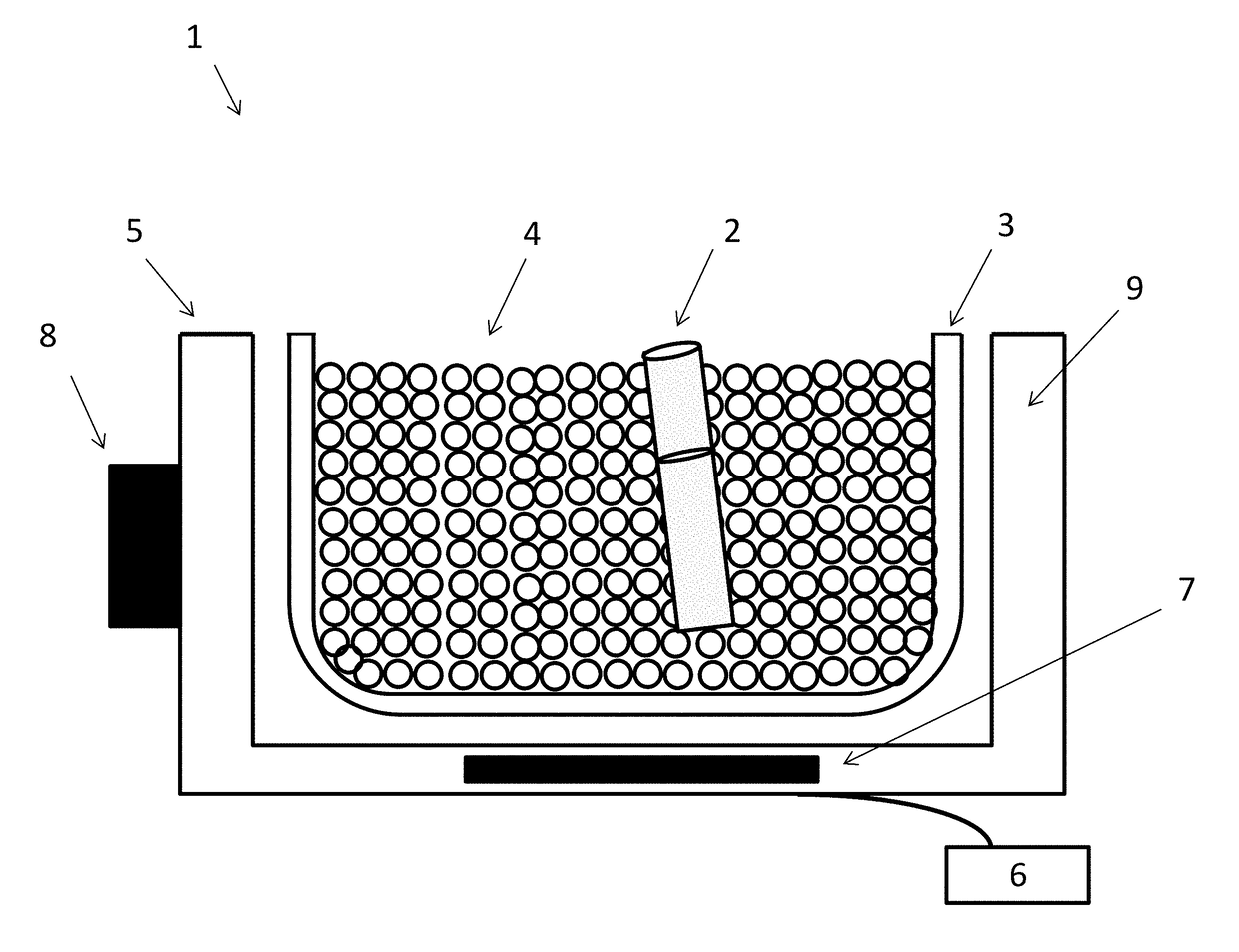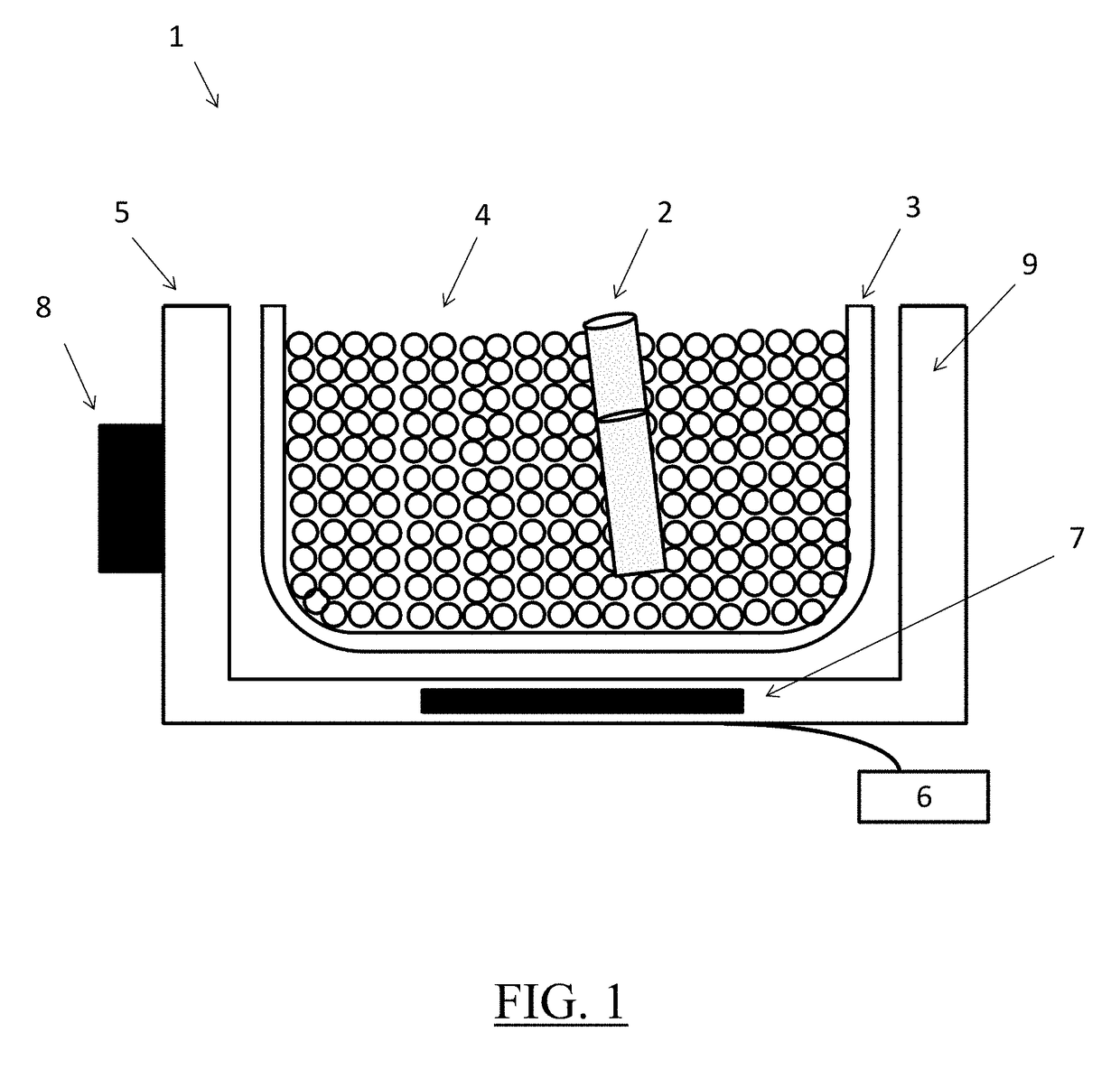Use of glass beads as a dry thermal equilibration medium
- Summary
- Abstract
- Description
- Claims
- Application Information
AI Technical Summary
Benefits of technology
Problems solved by technology
Method used
Image
Examples
example 1
Rates of Cooling using Different Cooling Media
[0023]A small amount of distilled water (3 ml sample) at 75° F. was placed inside a clinical centrifuge tube (Corning brand 15 ml capacity polypropylene tube). The amount of time required for the water sample in this centrifuge tube to be cooled to 45° F. when the tube was surrounded by different cooling media (pre-equilibrated to 32° F., held in an insulating polystyrene container) was measured using a stopwatch and a low mass thermocouple temperature probe to measure instantaneous temperature (ThermoWorks Inc. American Fork, Utah). Glass beads (1.2 mm and 2 mm diameter) consisted of soda lime glass and were obtained from Ceroglass Technologies, Inc., Columbia, Tenn. Aluminum pellets were also tested (LAB ARMOR BEADS) that are polished irregular-shaped rounded pellets approximately 5 mm in diameter, obtained from ThermoFisher Scientific, Inc.). Results (times required to cool the water sample from 75° F. to 45° F. in triplicate trials) ...
example 2
Rates of Cooling by Glass Beads vs. Aluminum Pellets as Cooling Medium
[0025]A small volume of distilled water (3 ml) initially at 74° F. was placed inside a disposable 13 mm×100 mm glass test tube (Fisher Scientific). The rate of cooling of the water in the test tube surrounded by approximately 250 g of either of two different thermal equilibration media was followed and recorded over time. The two different thermal media (each pre-equilibrated to 32° F.) were as follows: (a) Dry 2.6 mm diameter soda lime glass beads (obtained from Ceroglass Technologies, Inc., Columbia, Tenn.), and (b) Dry Lab Armor aluminum pellets described in Example 1 above.
[0026]The pre-chilled thermal media were held in an insulating STYROFOAM container to minimize warming of the media over the course of the experiments. A low mass thermocouple probe (see Example 1) was used to measure instantaneous temperature. Results (time averages) from duplicate trials were as follows:
Water Temperature (° F.)Time (min)Ch...
PUM
 Login to View More
Login to View More Abstract
Description
Claims
Application Information
 Login to View More
Login to View More - R&D
- Intellectual Property
- Life Sciences
- Materials
- Tech Scout
- Unparalleled Data Quality
- Higher Quality Content
- 60% Fewer Hallucinations
Browse by: Latest US Patents, China's latest patents, Technical Efficacy Thesaurus, Application Domain, Technology Topic, Popular Technical Reports.
© 2025 PatSnap. All rights reserved.Legal|Privacy policy|Modern Slavery Act Transparency Statement|Sitemap|About US| Contact US: help@patsnap.com


